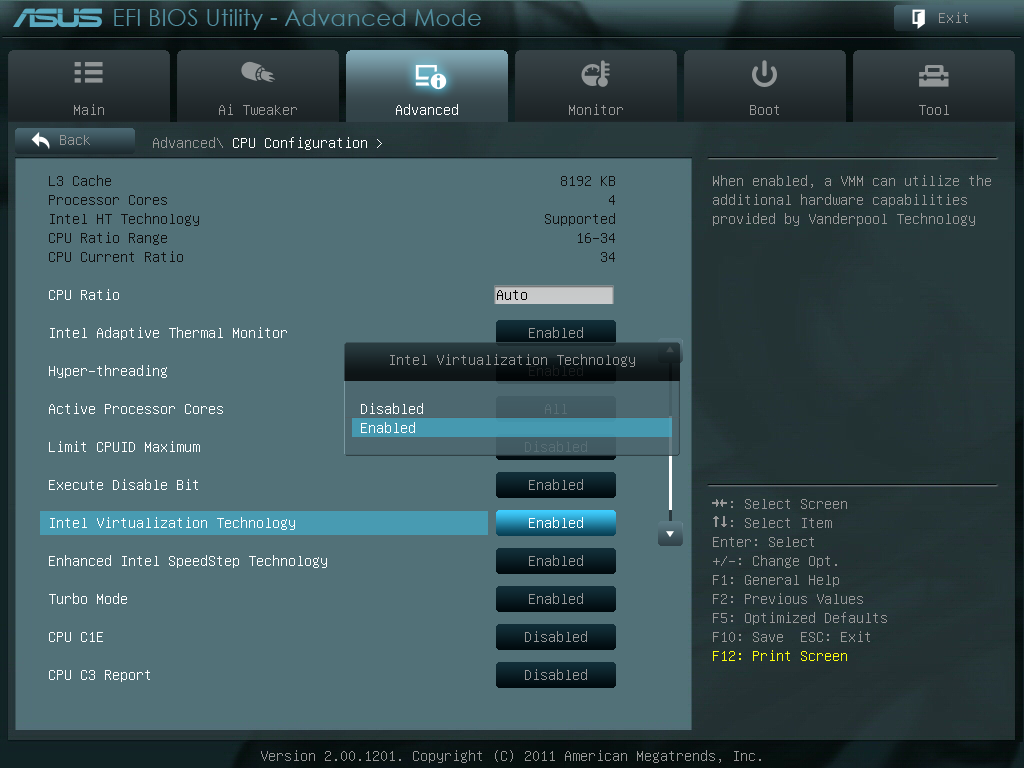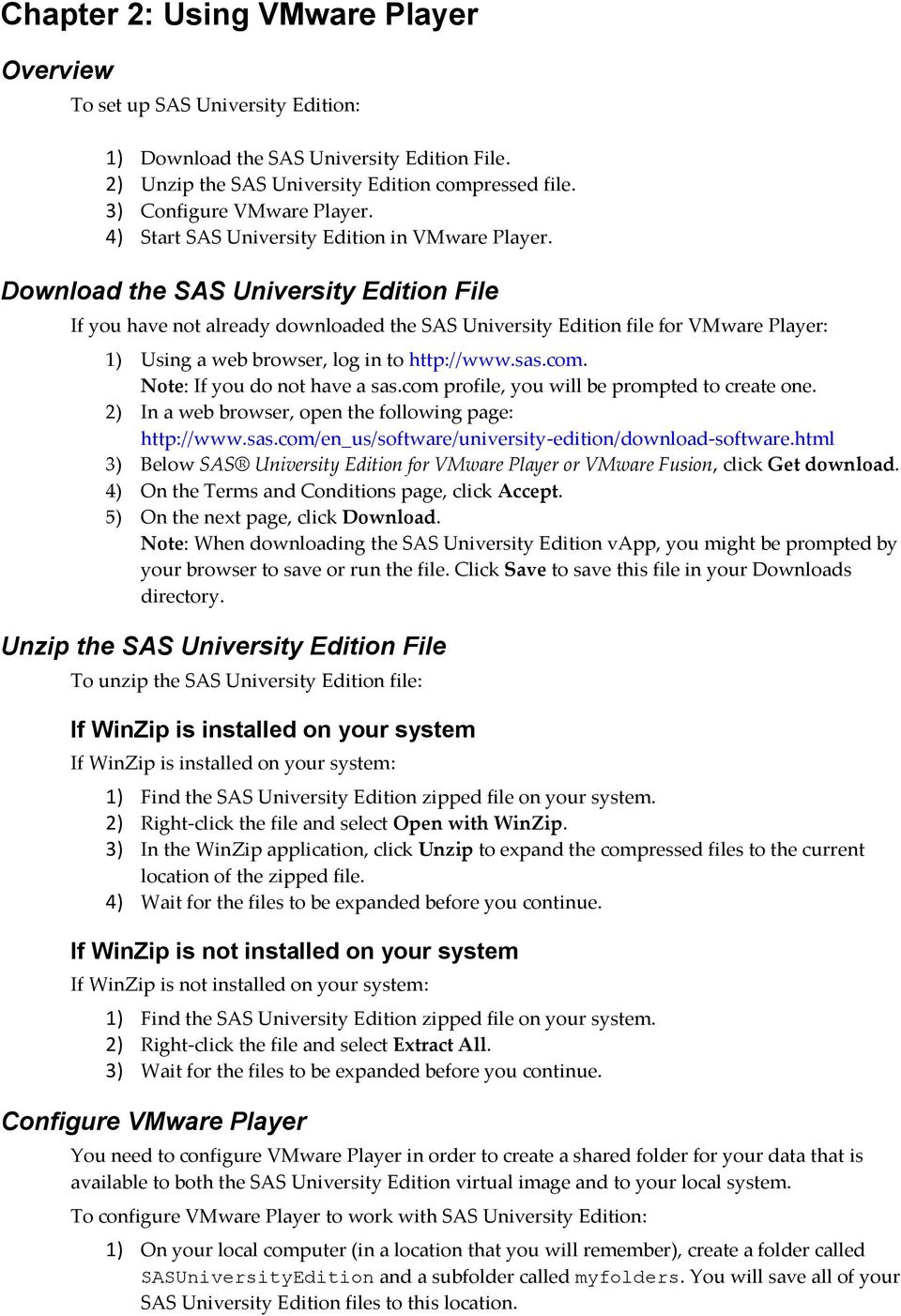

- #Sas university edition not working bios disabled install
- #Sas university edition not working bios disabled update
- #Sas university edition not working bios disabled windows 10
- #Sas university edition not working bios disabled Pc
- #Sas university edition not working bios disabled iso
From the bottom part, near where it says “Create boot-able disk using ”, click the small button with the disc and drive icon and choose your Windows install ISO. The USB key should be listed in the top dialog box, make sure you’re formatting the right drive if there are multiple USB drives currently inserted into the PC. On a separate computer, insert the USB key, and open Rufus as an admin. Any change from BIOS/MBR to UEFI/GPT WILL REQUIRE a Windows reinstall. NOTE: BIOS/MBR disks will not boot in a UEFI/GPT configuration. Go into the computer’s BIOS by pressing F2 during the boot sequence (Dell), before Windows even starts to load. Recovery image partition =įormat quick fs=ntfs label="Recovery image"Ĭreate the all-UEFI Windows install USB drive…

#Sas university edition not working bios disabled update
Rem ** NOTE: Update this size to match the size Rem ** NOTE: For Advanced Format 4Kn drives, Windows RE tools partition =įormat quick fs=ntfs label="Windows RE tools" Run DISKPART from the Windows PE prompt and enter the following commands to partition and format the drive as a GPT disk, minus the REM statements. Partition/format the drive as a GPT device.Ĭreate a boot-able Windows PE USB drive and boot the target computer to it, with the larger-than-2TB-HDD installed.
#Sas university edition not working bios disabled windows 10
After that, Windows 10 installed and I had ALL of the available space, which came in around 2.78TB. As soon as I partitioned and formatted the 3TB drive as GPT, and inserted the all-UEFI USB boot drive, the OptiPlex 990 saw the USB drive as a UEFI boot device and Windows setup accepted the partitioned 3TB drive for install.
#Sas university edition not working bios disabled Pc
Any and all BIOS/MBR, and UEFI/GPT boot devices are shown when the PC POSTs. I had yet to make a pure-UEFI USB key, and there was no disc in the DVD-RW drive, so no there were no UEFI boot options. The 3TB drive was GPT but did not contain any boot-able volumes at that point. This was accurate because none had been made available. While I was sorting this out, I noticed that when I switched the 990’s BIOS to UEFI mode, there were no more boot-able drives like the HDD, CD/DVD, or USB listed. One option to create the USB boot key was pure UEFI. I though that would work, and it should have, but the OptiPlex 990 was BIOS or UEFI, not both. Rufus defaults to creating a Windows PE volume, which is what Windows setup is, that supports both MBR and UEFI with backwards compatibility.
#Sas university edition not working bios disabled iso
A great piece of freeware called “ Rufus” is what I use to make the boot-able USB key from the Windows ISO file. I use an 8GB USB key drive to install Windows from an ISO file. The problem wasn’t the drive, which was set up correctly, it was the install media. Windows 10 setup would indicate that setup could not use any available partition as they were in GPT format. Still, Windows setup would not use the drive. I initially tried to get the 3TB HDD to be recognized by booting to a Windows PE boot drive and use DISKPART to partition and format the HDD as a GPT disk. Newer computers have the ability to use UEFI with support for legacy BIOS system (UEFI-CSM), but not the 990. Each are mutually exclusive to the OptiPlex 990. They rely on a newer system called the Universal Extensible Firmware Interface, or “UEFI.” The OptiPlex 990 has the ability to use a BIOS-based system or UEFI, but not both. Under BIOS/MBR, Windows setup would only see 2TB, leaving around 768GB unavailable. I should have just done my homework and just ordered a 2TB drive. There, the largest of drives can be partitioned and formatted as one single volume, which is what I was after.

To use the new crop of large drives with more than 2TB of space, one needs to format the drive as a GUID Partition Table or GPT device. BIOS-based computers use hard drives that are partitioned in the Master Boot Record or “MBR” format.

What I had found out that the default traditional method of BIOS hardware management on the PC only allowed it to see partitions or drives no larger than 2TB. I ordered a 3TB drive for my Dell OptiPlex 990 and had hoped to just plug and chug, but it didn’t work out that way. Using a virtualization program and creating a couple of production sized virtual machines will take up a great deal of that space very quickly.Ī larger hard drive is one of the easiest upgrades one can make to a computer. My desktop PC came with a 500GB hard drive. I do a great deal of work with virtual machines and perform all of my operating system development on virtual platforms.


 0 kommentar(er)
0 kommentar(er)
